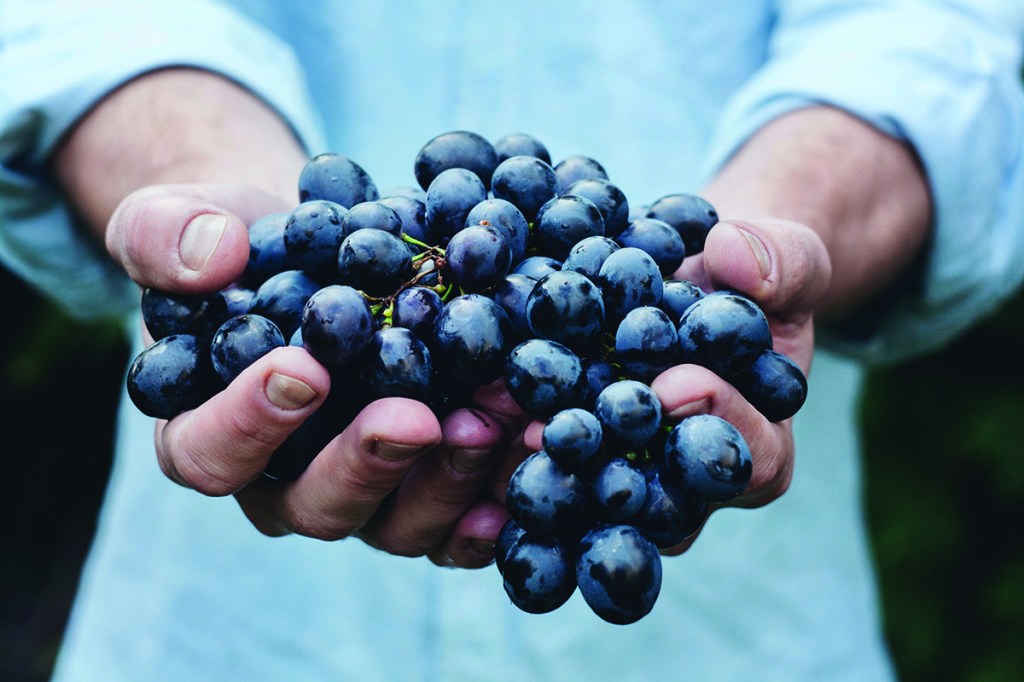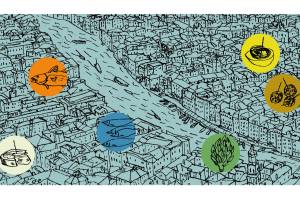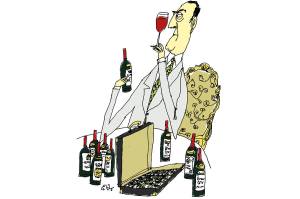The weight of history — a seemingly infinite vista of incident — hangs heavy in the Languedoc in the South of France. The region (also called Occitania) is the place where people said ‘oc’ rather than ‘oui’ for ‘yes’ — langue d’oc instead of langue d’oïl. Gauls, Romans, Visigoths, Franks, Moors, Cathars: one by one they came, they pillaged or prayed, slaughtered or were slaughtered. A plaque in the Carcassonne cathedral reminds us that only yesterday St Dominic (1170-1221) preached there during Lent.
A lot of nasty things have happened in Languedoc over the centuries. Perhaps that is one reason the people are so cheerful now. The area is also the biggest wine-producing region in France, which also contributes to the quota of cheerfulness. I’ll come back to wine in a moment. First, a word about the Cathars, a whacked-out sect of eastern origin that made great inroads in the Languedoc and neighboring venues in the 11th and 12th centuries.
The Cathars represented a revival of the Manichean heresy that so exercised St Augustine back in the 5th century AD. Also known as Albigensians, from the nearby town of Albi, the Cathars were dualists. They believed that God made the world of spirit, which was good, while the other world — that is to say, our world and everything in it — was the work of the devil. The body was bad, sex was bad, and if you didn’t wise up to this you were doomed to be continually reincarnated until you got it right.
The Cathars were New Agers before their time. They were feminists of a sort, welcoming women in priestly roles. They believed that some of their number were parfaits: perfect beings who had emancipated themselves from the material world in all but compassion for the rest of us yobs. (The word ‘Cathar’ comes from the Greek word καθαρός, meaning ‘pure’.) Being emancipated, and disbelieving in the sacraments, they eschewed marriage in favor of either celibacy or free love. (Didn’t they think sex was bad? Yes, but if you were truly emancipated, the material world didn’t matter; nice work if you can get it.) No wonder the Cathars made a comeback in the 1960s.
Some local nobles protected the Cathars, generally less for theological than for political reasons. The Cathars challenged the authority of the Church, which suited ambitious lords just fine. For its part, the Church took an exceedingly dim view of the heresy. Church authorities pleaded with the Cathars. They reasoned with them. They threatened them. Then at a pow-wow in 1208 a papal legate was murdered and Pope Innocent III terminated the nice-guy routine.
Under the direction of the Cistercian Abbot Arnaud Amaury, the First Albigensian Crusade got underway on July 22, 1209 at Béziers, a major Cathar redoubt. The Crusaders quickly breached the city’s defenses. When the knights asked how they were to distinguish the heretics from the rest, Arnaud Amaury memorably replied ‘Tuez-les tous, Dieu reconnaîtra les siens’: ‘Kill them all, God will know his own.’ Some scholars estimate that 30,000 people were dispatched for divine triage that day.
Whew. It’s a pity that Arnaud Amaury didn’t know Gérard Bertrand, professional rugby player turned winemaker. The good abbot could have used a glass or two of wine after that hard day’s work at Béziers. Owning or managing 16 estates throughout the Languedoc, Bertrand could have supplied the martial abbot with the needful as he waged his campaign against heresy. Bertrand’s various enterprises make all sorts of wine, red, white, sparkling, fortified. But, it being campaign season, I want to recommend his rosé wines. Some, like the spectacular Clos du Temple (a blend of Syrah, Grenache, Cinsault, Viognier and Mourvedre), will set you back $175 and are therefore unsuitable for peripatetic work.
But Bertrand also makes a suite of modestly priced rosés. I’d like to recommend you stock up on three. For picnics or beguiling the odd interval while waiting for the cocktail hour to arrive, I recommend Gris Blanc, a blend of Grenache Gris and Grenache Noir. It is light, bright, crisp, and open. I picked up some at a wine shop in Rowayton, Connecticut, for about $16 and was informed that locals refer to it as ‘Rowayton water’. They are right to do so.
A step up in elegance and complexity are Bertrand’s Cote des Roses ($17) and the splendidly named Source of Joy ($20), both blends of Grenache, Syrah and Cinsault. These are eager, companionable, clean and food-friendly wines, ideal accompaniments to summer luncheons, dinners or sieges against the strongholds of heretics.
This article was originally published in The Spectator’s August 2021 World edition.


















